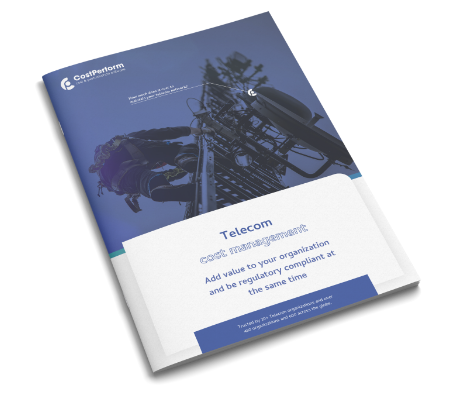Over the years, economists and accountants have devised various different costing methodologies which have different applications within pricing and management strategy, such as Fully Allocated Cost-models (FAC). FAC models take a defined group of costs and allocate them to different services. But what about changes in, for example, demand? LRIC (Long-Run Incremental Costing) provides an answer: LRIC models estimate costs for these different levels of demand. But what does LRIC entail? Why should you use it and why is it widely adopted in the field of regulators?
So, what is LRIC?
LRIC is the ‘long-run cost of providing an increment of output, which should be measured on a forward-looking basis’.
There are multiple terms in this definition that need further clarification:
Long-run (vs. short-run)
Short-run costs can be defined as only those costs that are incurred at the same time as the output is produced. For example, interconnect payments, salaries; provision of services usually involves long-term investment commitment. Long-run costs imply that all input, including capital equipment, can vary in response to a change in demand. This means that LRIC includes both variable costs and capital costs incurred by producing an increment of a production. Regulators prefer long-run costs, because these use a time period of at least the duration of the investment commitment.
Increments
An increment can be described as ‘something that adds to the total’. In regards to LRIC, an increment is a flexible term:
-
- It could be something specific like a minute or service.
-
- An average increment for multiple services (like traffic).
-
- The increment for an entire service (termination).
-
- The element of a service (switching).
Forward-looking
Forward-looking costs reflect the efficient costs that a network which is built today would incur, and must therefore reflect:
-
- Current, not past, asset prices.
-
- Modern equivalent assets, to reflect technological change.
-
- Efficient, rather than actual, asset and opex levels
-
- How costs vary with volumes.
Why use LRIC?
There are a number of reasons for selecting LRIC. Firstly, LRIC is forward-looking. This is especially relevant for the decision-making process (like price setting). Secondly, it can be used to support planning and budgeting by its forecasting abilities. Thirdly, LRIC helps to expose inefficiencies. These three reasons result in regulators usually demanding LRIC from, for example, Telco organizations. Telecom organizations can accurately model network usage costs with cost allocation software.
LRIC and regulators
Regulators are tasked with mimicking competitive markets by ensuring there is no monopoly pricing, predatory pricing or cross-subsidization. This way, they can correct for market failures. Price regulation is one of their key mechanisms to partially correct for certain market failures, they aim to cause a regulated move in prices towards the levels that exist in markets that function properly. LRIC is the preferred costing methodology to set prices.
Regulators are looking for maximum transparency.
Broader LRIC applications
Apart from correcting marketing failures, LRIC can also be used in a number of other ways:
-
- Interconnect price setting and/or control: assessing the termination and other regulated service costs, and setting of cost-based regulation.
-
- Universal service costing: analyzing long-run costs of universal service obligations or uneconomic deployments.
-
- Retail price setting: understanding the underlying costs to retail prices to assist in effective retail price positioning.
-
- Detection of cross-subsidies: comparing retail revenues to underlying service costs.
-
- Market forecasting/management: making strategic assessment of markets over a long-run time period.
-
- Technology/supplier appraisal: reviewing lifetime impacts of technological choices.
-
- Profitability: determining the “true” measure of profitability for services and service bundles.
Further Reading
Are you interested in using CostPerform for LRIC in Telecoms? Download our Telecoms Whitepaper.
Check out this internal discussion document from the Royal Mail’s implementation of LRIC Estimates.
Want to understand how CostPerform integrates LRIC? Get a free trial here.
